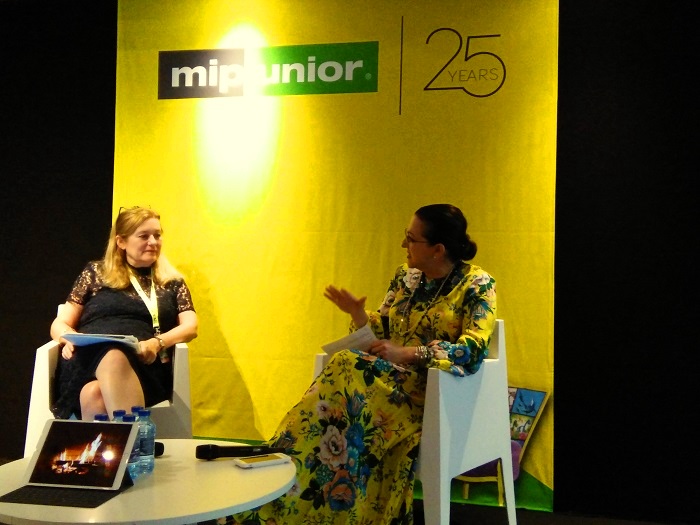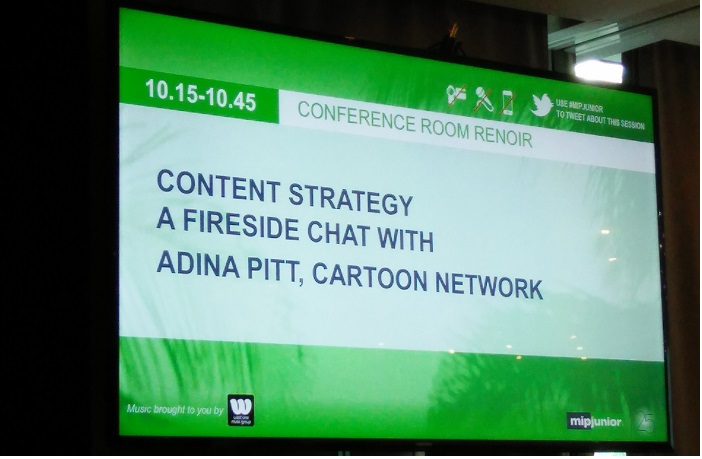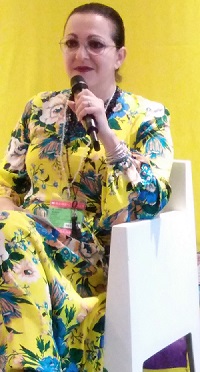
It was a warm morning at MIPJunior 2017, with a cosy firechat with Adina Pitt, VP content acquisitions and co-productions, Cartoon Network and Boomerang. She addressed how Cartoon Network is responding to the evolution in the kids market. Sarah Baynes, director of The Creative Garden moderated the session. A virtual fireside was created through the computer screen in the middle. Adina who was all dressed in yellow showed her funny side when she quipped that she would help crack deals if someone gives her a coffee there. And bazinga! There were around 4-5 people offering coffee.
Coming back to the session, “Supply and demand is tricky as a buyer,” Pitt acknowledged. “There’s so many more platforms. People aggregate content with such frequency that we can’t make it as fast as we need it.”
Of course, that isn’t buying’s only problem today. “Economics can be tricky; putting together a show, the financing is hard. As a community, we have to work together to create new models, look at creative ways of getting content together faster.”
A lot of this has to do with how unrealistic supply expectations have become when compared to how long it takes to create content in the first place. “The moment we say yes to something, we could be looking at an 18-month to two-year window before that series becomes available,”Pitt pointed out. “Think about how long it takes to take delivery of 20 episodes”—a figure she called the “minimum to do a proper strip.”
“It takes a long time,” Pitt went on. “The moment we say yes to something and that’s a go, we’re already looking for the next thing to pick up. We live in several lanes.” Or as she’d later put it, “We are constant curators. We’re looking all the time.”

Which is why collaboration is more important than ever. “People need to partner—with us, with each other, to build, so when you come to us we can accelerate faster,” Pitt emphasised.
She also provided advice for people looking to sell their content this week: “Is it big enough, and can it travel?” Pitt asked. “Those are the questions we’re going to ask you, because we’re being asked those questions.”
Also, “Think where you want your property to go,” she counselled. If you decide to execute on YouTube first, as Adventure Time did, ask: “How does that affect ancillary revenue? Are you going to get a toy deal off of that? How do you measure consumers? You might get a million hits, but do they come back?”

Pitt summarised, “Think about it as a really long tail—not a one-and-done.”Lastly in advice, “Get over yourselves,” she said. “Don’t work alone. Partner, partner, partner.”
In Q and A, Pitt took the opportunity to respond to something to Fred Seibert’s MIPJunior 2017 keynote. She said that little has changed in kids TV in 20 years, and you wouldn’t even know that Minecraft — an online building game and apparently the most searched-for term among young children — existed from the shows.
“We can talk about this for days, but I actually believe in the circle,” Pitt replied. “There’s an element of sameness amidst all this newness. We’re still mining content for kids and that process is still the same. How you deploy it, and what it is, is what’s changing. I don’t think kids are gonna stop watching animation; they might just want it served another way.”
Perhaps with that in mind, asked by Baynes what’s coming up on the Cartoon Network pipeline, Pitt refrained from sharing anything concrete … but nonetheless tossed a hint our way. “I use the word ‘immersive’, and that’s an important word. Kids want to experience their content the way they want to experience it. They live that property.”

